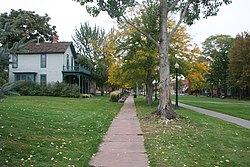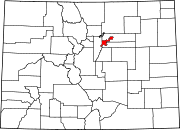
Denver is a consolidated city and county, the capital, and most populous city of the U.S. state of Colorado. Its population was 715,522 at the 2020 census, a 19.22% increase since 2010. It is the 19th-most populous city in the United States and the fifth most populous state capital. It is the principal city of the Denver–Aurora–Lakewood, CO Metropolitan Statistical Area and the first city of the Front Range Urban Corridor.
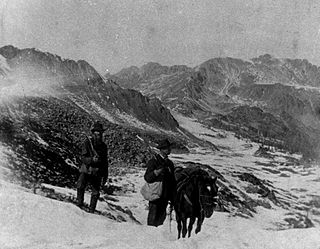
The Pike's Peak Gold Rush was the boom in gold prospecting and mining in the Pike's Peak Country of western Kansas Territory and southwestern Nebraska Territory of the United States that began in July 1858 and lasted until roughly the creation of the Colorado Territory on February 28, 1861. An estimated 100,000 gold seekers took part in one of the greatest gold rushes in North American history.

Arapahoe County is a county located in the U.S. state of Colorado. As of the 2020 census, its population was 655,070, making it the third-most populous county in Colorado. The county seat is Littleton, and the most populous city is Aurora. The county was named for the Arapaho Native American tribe, who once lived in the region.

The Territory of Colorado was an organized incorporated territory of the United States that existed from February 28, 1861, until August 1, 1876, when it was admitted to the Union as the State of Colorado.
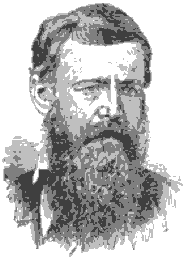
William Larimer Jr. was an American businessman, investor, militia general, and politician who is best known as the founder of Denver, Colorado, in 1858. Larimer often went by "General Larimer", having acquired the title in the Pennsylvania Militia.

Auraria Campus is an educational facility located near downtown Denver, Colorado in the United States. The campus houses facilities of three separate universities and colleges: the University of Colorado Denver, Community College of Denver (CCD), and Metropolitan State University of Denver. In 2017, there were approximately 54,812 students between the three schools, with rapid growth projected over the following few years. However, due to Covid and declining enrollment, the collective student population in 2022 was approximately 38,000, with an additional 5,000 faculty and staff.

Auraria Library is an academic library in downtown Denver, Colorado. It provides academic resources and research experiences to students, staff, and faculty at the University of Colorado Denver, the Metropolitan State University of Denver, and the Community College of Denver (CCD) on the Auraria Higher Education Center (AHEC) campus, also called the Auraria Campus. The Library is administratively operated by CU Denver and occupies a building owned by the State of Colorado.
The History of Denver details the history of the City and County of Denver, Colorado, the United States from its founding in 1858 to modern-day. Ever since the gold rush, Denver has been Colorado’s gateway and major metropolis. With its location at the intersection of the plains and the mountains, its people and institutions have tied together the sections of the state and served as a point of contact between Colorado and the wider world. As the state’s political capital and largest city, Denver has been the natural center for decision-making. New programs and ideas have typically spread outward through the public agencies and private organizations that have Denver headquarters.

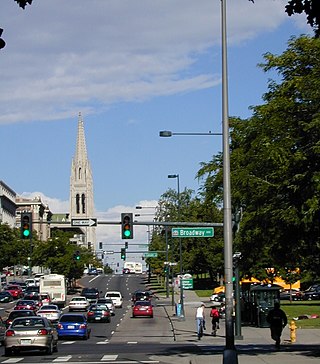
The oldest part of Denver, Colorado, now the neighborhoods of Auraria Campus, LoDo, much of downtown, and Five Points, is laid out on a grid plan that is oriented diagonal to the four cardinal directions. The rest of the city, including the eastern part of downtown, is laid out primarily on a grid oriented to the cardinal directions. In this larger grid, from east to west, there are generally 16 city blocks per mile, except between Zuni Street and Lowell Boulevard in west Denver. From north to south, there are typically eight blocks per mile, although there are many areas with more blocks per mile. Addresses follow a decimal system, with addresses advancing by one hundred at each cross street.

The Tivoli Brewery is a historic building originally home to the Tivoli Brewing Company. It was designed by prominent Denver architect Frederick C. Eberley. The building is located in the Auraria Neighborhood of Denver, Colorado. Today the building is home to the Tivoli Student Union of the Auraria Campus, serving as a student center for the Metropolitan State University of Denver, Community College of Denver, and the University of Colorado Denver. In August 2015 the revived Tivoli Brewing Company began brewing in a new facility inside the building, in the original brewing area.

Lincoln Park is a neighborhood and public park close to downtown Denver, Colorado and the location of the Art District on Santa Fe. The neighborhood is one of Denver's oldest and is just to the south of the area where Denver was first settled in the 1850s. Many houses date from about 1900. The neighborhood is sometimes called "La Alma/Lincoln Park" or the West Side.

The following outline is provided as an overview of and topical guide to the U.S. state of Colorado:
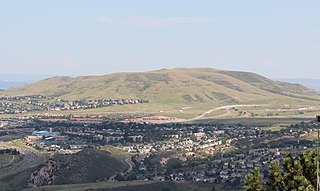
Lakewood is the home rule municipality that is the most populous municipality in Jefferson County, Colorado, United States. The city population was 155,984 at the 2020 U.S. Census, making Lakewood the fifth most populous city in Colorado and the 167th most populous city in the United States. Lakewood is a suburb of Denver and is a principal city of the Denver–Aurora–Lakewood, CO Metropolitan Statistical Area and a major city of the Front Range Urban Corridor.

The University of Colorado Denver is a public research university located in downtown Denver, Colorado. It is part of the University of Colorado system. Established in 1912 as an extension of the University of Colorado Boulder, CU Denver attained university status and became an independent institution in 1973. CU Denver is the largest research university in Colorado, and is classified among R1: Doctoral Universities - Very High Research Activity. The university's graduate programs award more master's degrees than any other institution in the state, serving roughly 5,000 students annually.
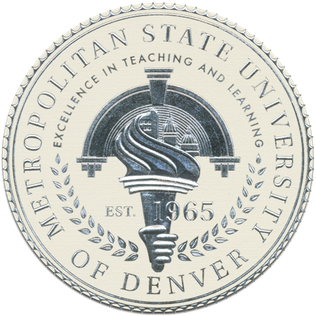
Metropolitan State University of Denver is a public university in Denver, Colorado. It is located on the Auraria Campus, along with the University of Colorado Denver and the Community College of Denver, in downtown Denver, adjacent to Speer Boulevard and Colfax Avenue. MSU Denver had an enrollment of 15,682 students in the fall of 2022.

John C. Moore was an American politician and journalist who served as the first mayor of Denver from 1859 to 1861. He was an early settler of Denver, while the area was still a territory of the United States. Moore was a newspaper journalist and publisher, working on papers in Denver, St. Louis, Kansas City, and Pueblo, Colorado. During the American Civil War, he was a judge adjutant general and colonel in the Confederate States Army.
Henry Allen was an American pioneer and politician. He served in the United States Army before settling in Council Bluffs, where he was a postmaster. He was at the front of the Pike's Peak Gold Rush, arriving in Denver of the Kansas Territory in October 1858. He prospected for gold and was the first official postmaster of the Pikes Peak region. As a surveyor, he helped establish Auraria, Highland, which later came part of the city of Denver. He was a founder of a company that diverted water from the South Platte River through irrigation ditches. He held the first meeting in his cabin for what became the Auraria Masonic Lodge. He was a delegate from Auraria for the first Constitutional Convention of the Jefferson Territory. Allen and his wife lived in mining towns in Colorado, Idaho, and Montana. Due to poor health, Henry and Susan Allen moved to California, where Allen died in 1871.
